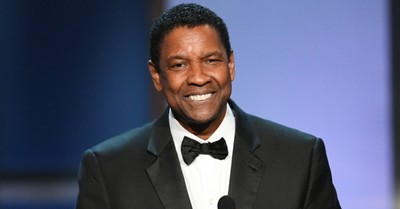Summer Reading — Books Fit for the Season, Part 2
- Albert Mohler President, Southern Baptist Theological Seminary
- Updated Jun 03, 2010

Read part one of this list here.
Readers are a hopeful lot. Ask most serious readers what they intend to read over the next month, and you are likely to hear a considerable list. Books stack easily in more ways than one. The stack of books to be read beside the desk or reading chair is a statement of hope. No matter how busy we find ourselves to be, the books are there waiting.
That is why summer is a special season for reading. Finally, we can read some of those volumes we have been promising ourselves to read. Hopefully, the stack for summer reading includes some books to read for sheer enjoyment. The following is a list of ten books that, in my opinion, make for great summer reading. The list is heavily weighted in history, but the kind of history I first learned to enjoy as a boy — history that tells a story worth knowing about people and times that fascinate.
This year's list also proves that boys never grow up. Among the ten books I commend this year are books dealing with cowboys, Indians, gangsters, lawmen, trains, spies, and battles. Those looking for books on birds and romance should consult some other list.

Children often imagine that their parents are not what they appear to be. How many boys have conjured the imaginary conception of their father as a spy — a man who only seems to be a stockbroker, grocer, or insurance agent, but is actually a secret agent? In the case of young Jimmy Burns, the truth was more exciting than his imagination.
In Papa Spy, Jimmy Burns tells the story of his father, Tom Burns, a young publisher who became the British press attaché in Madrid during World War II. Jimmy Burns was born after the war, but as he grew up, he discovered the kinds of clues about which other children dream. He found a pistol and a miniature camera, which, along with a great deal of other data drawn from his parents, led him to suspect that his father had been a secret agent during the war.
After his father's death in 1995, Jimmy Burns set out to discover the truth. Trained and experienced as a journalist, Burns conducted interviews and spent hours in the archives of both Britain and Spain — including the personal archives of Francisco Franco. Along the way, Burns tells the story of Spain's collusion with Hitler and of his father's ties to figures ranging from Leslie Howard to Soviet spies Kim Philby and Anthony Blunt. He also takes readers into the world of British literature before, during, and after the war, revealing the great divide that emerged between the secularist and socialist Bloomsbury group and the Roman Catholic writers and publishers such as his father.
Sometimes, your father really is a secret agent. But, as Jimmy Burns' story of his father reveals, that is a morally complex discovery which includes shadows that can never be fully explained.
Excerpt:
Before VE Day was over, Burns was taken by a group of officials from the Spanish Ministry of Foreign Affairs to the German embassy to officially "liberate" it from Nazi occupation. The Nazis has vacated the building in an operation staggered over a number of months, the exodus seemingly completed just hours before Burns arrived. Missing were works of art, and documents which had been removed or destroyed. The only remaining pieces of furniture were some chairs, office desks and filing cabinets, all of which were empty. In one of them Burns found a Mauser pistol and a large number of Iron Crosses, many of them apparently intended for the Spanish volunteers who had fought for the Blue Division on the Eastern Front. Burns pocketed them all, then climbed on to the roof and hoisted the Union Jack.

"There is something almost terrifying in the transition of a presidential train into a funeral train." So wrote reporter Thomas F. Reynolds of the Chicago Sun as the nation grieved the death of President Franklin Delano Roosevelt. The nation was shocked by the President's sudden death, but Roosevelt's deteriorating health had been a closely-guarded secret. Then again, anyone who saw him in the weeks preceding his death had the sense that they were looking at a dying man.
In FDR's Funeral Train, Robert Klara takes his readers back into 1945 and the tumultuous world-changing events that took place as the Allies were pressing forth to win the victory in Europe, the stage was set for dropping the atomic bomb on Japan, and Franklin Delano Roosevelt was trying to stay alive. His death, assumed to be from a massive brain hemorrhage, set in motion one of the strangest and most unprecedented series of events in the nation's history.
In a brilliant move, Klara takes his readers on the Presidential train that was so quickly transformed into a funeral train. FDR's Funeral Train is one of those books that surprises on page after page, revealing the great vulnerabilities the nation experienced during the days before and after Roosevelt's death. Virtually the entire government of the United States rode on a single train to the funeral at Hyde Park — a single train that carried almost all the nation's leaders while the nation was at war.
The cast of characters in FDR's Funeral Train includes Eleanor Roosevelt, Harry Truman, and a host of others. Additionally, Klara offers fascinating details about such things as the Presidential railroad cars and the habits of Franklin and Eleanor Roosevelt. The book resists being put down.
Excerpt:
Ferman White, a foreman for the Southern Railway, clocked off his shift at Atlanta's sprawling North Avenue Yards around 4:30 p.m. On his way home, White decided to stop and buy some groceries. It was in the store that he learned the news, and raced to the nearest phone. White had one thought on his mind as he called the roundhouse. It was a piece of knowledge that few men in Atlanta possessed and one that White guarded closely. On a layup track in the yards, a special train-the president's train-had been parked for two weeks. It would not, White knew, stay parked for long now. Charles Craft, another foreman, picked up the phone. "Charley," White shouted into the receiver. "We'll need two light Pacific [engines]. What you got in sight?" "The 1262 and 1337 are on the cinder pit," Craft answered. "Get them going," White said.

Of all the legends of the Old West, none has the lasting power of the story of Billy the Kid and Pat Garrett, the lawman who chased him down. In To Hell on a Fast Horse, Mark Lee Gardner tells the story more completely than has been done in the past, and along the way he uses the skill of a historian to strip away the legends from the truth — except where he admits that this is impossible.
"You can feel the ghosts as you speed down the long, lonely roads of eastern New Mexico," Gardner writes. "The land is little changed, except for endless strands of wire fence and an occasional traffic sign." As he explains, Gardner has "made the ghosts give up a few more of their secrets."
And the truth is both compelling and hard. Those hoping to find a burnished reputation for Billy the Kid will be disappointed. The truth is that he was a baby-faced, but cold-blooded killer. As for Pat Garrett, he is seen as the prototype for the Western lawman — a man running from his own past with a clear and almost equally cold-blooded sense of justice. The intersecting lives of Billy the Kid and Pat Garrett tell the story of the Old West in a way no other lives can. Gardner traces the story from the arrest of Billy the Kid at the end of 1880, through his bloody breakout and escape on April 28, 1881, to his fatal encounter with Pat Garrett on July 14 of that year.
The story is powerful, well-told, and instructive. Gardner concludes with a consideration of the roles Billy the Kid [Billy Bonney] and Pat Garrett have played in the American imagination. Is it not strange that America remains fascinated with Billy the Kid rather than Pat Garrett? With the murderer, rather than the lawman?
Excerpt:
The Kid and Pat Garrett are forever linked, and rightly so, in legend, but historically, in the memories of their friends and enemies. "I knew both these men intimately," Sally Chisum told Walter Noble Burns in 1924, "and each made history in his own way. There was good mixed with the bad in Billy the Kid and bad mixed with the good in Pat Garrett. Both were distinctly human, both remarkable personalities. No matter what they did in the world or what the world thought of them, they were my friends. Both were real men. Both were worth knowing."

Some stories are worth the wait. Other stories are almost too strange to believe. Operation Mincemeat is both, but the story is true. Students of World War II are at least partially familiar with the story of "Operation Mincemeat," the effort to deceive the Nazi's about the Allied plans to invade Sicily. The espionage operation involved dropping the body of an already deceased man into waters just off of Spain. A briefcase filled with erroneous Allied war plans was handcuffed to the body and an elaborate cover story was constructed — all with the intent to fool the Nazis. The operation was stunningly successful, fooling even Hitler, but it almost fell apart at several key turns.
The story was told, incompletely, in the film "The Man Who Wasn't There," and has been the subject of considerable speculation and legend. Now, Ben Macintyre of the The Times [London], author of Agent Zig-Zag, tells the whole story — and what a story it is.
Macintyre gained access to the papers of Ewen Montagu, the mastermind of the operation. He was able to put the story together with details never before known. It is a page-turner that is better than fiction. As Macintyre relates: "The plan was born in the mind of a novelist and took shape through a most unlikely cast of characters: a brilliant barrister, a family of undertakers, a forensic pathologist, a gold prospector, an inventor, a submarine captain, a transvestite English spymaster, a rally driver, a pretty secretary, a credulous Nazi, and a grumpy admiral who liked fly-fishing." As has been said, truth is stranger than fiction.
Excerpt:
One by one, Hitler's key advisers were being drawn into the deception, either by access to the documents themselves or through independent "confirmation," as the same intelligence arrived by other routes: Canaris, Jodl, Kaltenbrunner, Warlimont, von Roenne. By May 20, Mussolini "had come round to the same view." A collective willingness to believe seems to have gripped the upper reaches of the Nazi war apparatus, driven by Hitler's own belief. It takes a brave man to stand up to the boss in such circumstances. The men around Hitler were not made of such stuff.

Empire of the Summer Moon caught me by surprise. Sam Gwynne tells the story of the battle between the white settlers and the Comanches, the most fearsome and skilled warriors of the Native American tribes. He takes his readers into frontier life in the "Comancheria," most of which is in modern-day Texas. Time and time again, soldiers and settlers would learn the lessons of the Comanches the hard way as the war continued from 1836 to 1875. Like the ancient Spartans, the Comanches trained their sons to do one thing — to be warriors. Comanche boys rode horses bareback by age 6. As Gwynne remarks, "No tribe in the history of the Spanish, French, Mexican, Texan, and American occupations of this land had ever caused so much havoc and death. None was even a close second." By the middle of the nineteenth century, this much was clear — either the Comanches would be defeated or the westward expansion would be stopped dead.
But as well as Gwynne tells this story, what makes Empire of the Summer Moon so enthralling is his telling of the story of Cynthia Ann Parker, a nine-year-old member of the pioneering Parker clan, who was taken as a hostage in a massacre. She became known as the "White Squaw" of the Comanches, refusing to go back to her native world until captured by Texas Rangers. She became the mother of Quanah, the most fearsome and legendary of the Comanche warriors and leader of the Quahadis, their most savage band — a man never defeated in battle who became the crucial leader for the transition of the Comanches in a new age. Empire of the Summer Moon tells a story that will not only captivate the reader, but will reveal a largely unknown dimension of the nation's history.
Excerpt:
The logic of Comanche raids was straightforward: All the men were killed, and any men who were captured alive were tortured to death as a matter of course, some more slowly than others; the captive women were gang-raped. Some were killed, some tortured. But a portion of them, particularly if they were young, would be spared (though vengeance could always be a motive for slaying hostages). Babies were invariably killed, while preadolescents were often adopted by Comanches or other tribes. This treatment was not reserved for whites or Mexicans; it was practiced just as energetically on rival Indian tribes. Though few horses were taken, the Parker's Fort raid must have been deemed a success: There were no Indian casualties, and they had netted five captives who could be ransomed back to the whites for horses, weapons, or food.
I will release a second reading list later in the summer. For now, enjoy this list and its suggestions. Don't wait too long to get started on your summer reading. Otherwise, you will be staring at the same stack of books on Labor Day.
I am always glad to hear from readers. Write me at mail@albertmohler.com. Follow regular updates on Twitter at www.twitter.com/AlbertMohler.



















